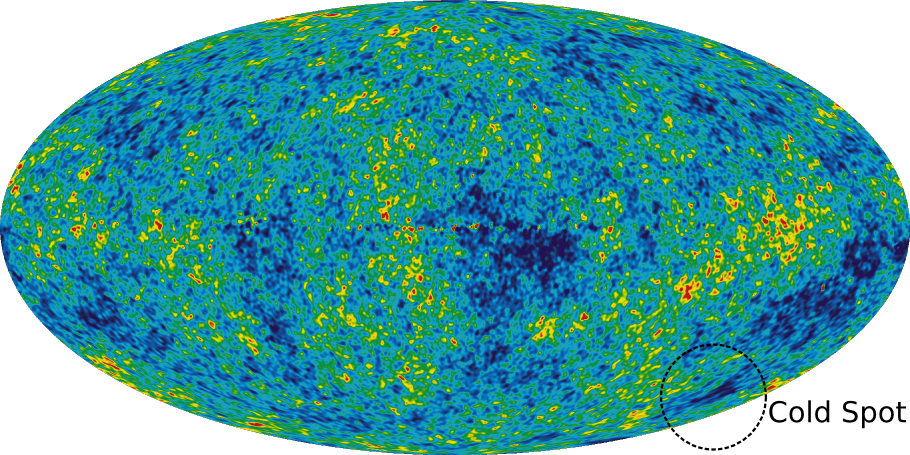The cosmic microwave background (CMB) is relic radiation from the early Universe, just 400 million years after the Big Bang. At that time, the Universe was very hot and no structures had formed yet. The thermal radiation that we see from this period is extremely homogeneous and isotropic across the sky.

The fluctuations on this all-sky map of the cosmic microwave background have an amplitude of 200 micro-Kelvin. The radiation is thermal so the intensity is related to temperature and we refer to regions as either hot or cold relative to the mean. The mean temperature is 2.7K today, but was much hotter, 3000K, when the photons were produced soon after the Big Bang.
Massive structures in the Universe can affect the cosmic microwave background radiation. Large under-dense regions stretch photons out, potentially producing slight cold spots, see supervoids. We carried out a survey of galaxies along the line-of-sight to the Cold Spot, to look for a supervoid.